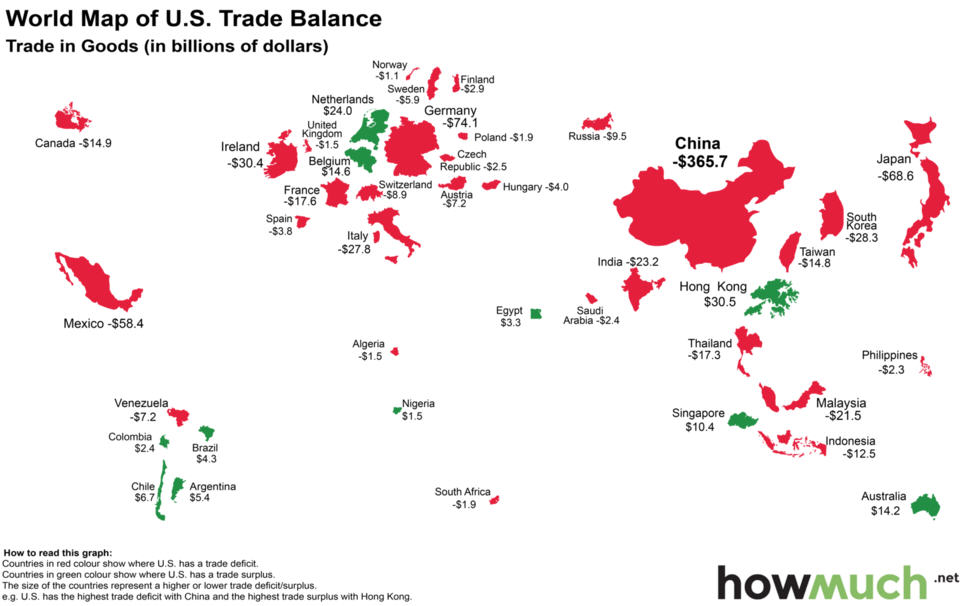Visualising US exports & imports
The U.S. Census Bureau recently released its data on U.S. trade in goods by selected countries and world region for 2015. We built three maps to provide a proportional visualization of the trade that occurs between the U.S. and other countries. Exports are represented in green, imports are represented in red, and the balance (exports – imports) is represented by red or green depending on whether the U.S. has exported more or less goods than it has imported. For instance, if a country’s imports exceeds its exports, the country will experience a trade deficit, which represents an outflow of domestic currency to foreign markets. Based on the data, the U.S. exported over $1.5 trillion and imported over $2.2 trillion in goods throughout 2015. This leaves leaves the U.S. with a negative balance of $735 billion!
Largest Balances by Country
Take a look at the top 5 countries with the largest balances (positive and negative):
Top 5 Positive Balances
-
Hong Kong: $30.5 billion
-
Netherlands: $24.0 billion
-
Belgium: $14.6 billion
-
Australia: $14.2 billion
-
Singapore: $10.4 billion
Top 5 Negative Balances
-
China: $365.7 billion
-
Germany: $74.2 billion
-
Japan: $68.6 billion
-
Mexico: $58.4 billion
-
Ireland: $30.4 billion
Top 5 Countries for Exports
Take a look at the top 5 countries that the U.S. has exported goods to:
-
Canada: $280.3 billion
-
Mexico: $236.4 billion
-
China: $116.2 billion
-
Japan: $62.5 billion
-
United Kingdom: $56.4 billion
Together the top 5 countries make up about 50% of all U.S. exports.
Top 5 Countries for Imports
Take a look at the top 5 countries that the U.S. has imported goods from:
-
China: $481.9 billion
-
Canada: $295.2 billion
-
Mexico: $294.7 billion
-
Japan: $131.1 billion
-
Germany: $124.1 billion
Together the top 5 countries make up about 59% of all U.S. imports.
Maintaining a Balance in Trade
Looking at the data by area shows that South/Central America, OPEC and Africa are the only regions with positive balances, whereas North America, Europe, and Pacific Rim areas show a negative balance. Interestingly, China, which as a negative balance of $365.7 billion represents ~80% of the negative balance attributed to the Pacific Rim countries and ~50% of the overall negative balance! To put this into perspective, the continent of Europe represents only ~23% of the overall negative balance for selected countries.
How can the U.S. close the gap between imports and exports?
More News
{{ commodity.name }}
{{ post.title }}
{{ post.date }}




Comments